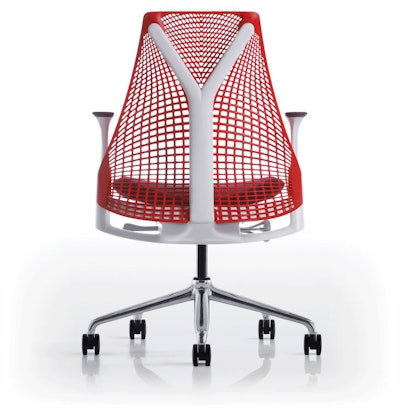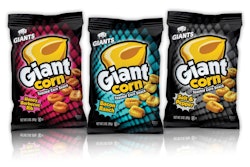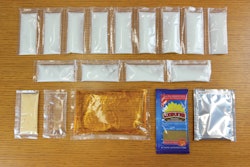Herman Miller has long been known for the classic industrial design of its office furnishings, as well as for its commitment to sustainability. Operating under a mandate to “design and build a better world,” the Zeeland, MI, based manufacturer is not only passionate about the ergonomics and earth-friendly features of its products, but also of its operations, as well. Recently, a team at its Holland, MI, facility engineered a new reusable packaging solution for the transport of a chair component from the supplier to the assembly line that has resulted in considerable sustainability advantages, as well as measurable savings in time and cost.
“We have a strong commitment to our environment and are always looking for ways to reduce waste; whether it is packaging material or extra labor needed to repack parts for efficient presentation to our assembly lines,” explains Herman Miller packaging engineer Cindy Doman. “When implemented correctly, returnable packaging can cut down on the number of touches a part receives, both in material handling as well as the handling of the part on the assembly line.”
In 2012, Herman Miller’s Holland operation organized a cross-functional team—comprising production supervisors, facilitators, conveyance operators, material handlers, the part supplier, and the packaging engineer—to develop a returnable package design for a “Y”-shaped plastic part, called a “spine,” that is assembled on its SAYL® office chair. The part is made from glass-filled nylon and includes many surfaces that cannot be scratched or scuffed.
Until that time, the part, supplied by Dahti Seating, in Rockford, MI, had been shipped to Herman Miller in corrugated boxes that were sometimes bundled or stretch-wrapped with additional film. Boxes were reused several times before being recycled, while other materials were disposed of. The solution required considerable handling by operators both stocking the line and assembling the chairs.
In considering a new, reusable solution, the package design team wanted to find one that would optimize:
•
The part supplier’s manufacturing processes (without adding more time or effort)
•
Transportation (trailer cube)
•
Material handling (labor and time reduction)
•
Sustainability (cut down waste)
•
Part presentation on the line to effectively cut down on labor time, without sacrificing quality
Packaging as part of product development
Reusable packaging has been a core strategy at Herman Miller for 20 years. As Doman relates, designers now consider returnable packaging options during the development stage of a new product, such as the SAYL office chair, taking into account supplier location, part volume, and any special quality needs the part has. “We had always planned on a returnable solution [for the SAYL spine], but it took a while to actually develop and prove out the idea on our line,” she explains.
“When considering reusable packaging, you need to look at the entire process from start to finish,” Doman adds. “It starts with looking at the current condition and identifying all the different areas of waste, including excess handling. Then you identify the target condition, like reducing time on the line or keeping manufacturing as lean as possible. Then you start working on the design of the reusable packaging.”
As the cross-functional team observed, with the existing corrugated packaging, one operator was required to cut open the boxes, take the parts out individually and mount them on a carrier (or package, as Doman calls it) that could present the spines for assembly, and then load the packaging onto the conveyor. At the point of assembly, another operator would remove the spines from the packaging. Several touches were required to orient the spines in the correct position for assembly onto the chair. The operator would then have to return the packaging to the person stocking the line.
“We focused on this particular part because of the high amount of handling it required,” says Doman. “And we want to eliminate handling of packaging by workers on the line.”
The new packaging design developed by the team consists of a galvanized steel rack, movable by pallet jack or hilo, custom-built by Cannon Equipment, that holds 180 spines, unitized in groups of 10 on a returnable filler that uses crosslink polyethylene foam to hold each spine. The filler was designed and supplied by Kentwood Packaging Corp. (616/325-1111).
Now, when the parts arrive from the supplier, they are ready to use as soon as they hit the production floor. With the previous packaging, Doman says, Herman Miller would first put the parts in a warehouse location until they were ready for repacking. With the new process, the rack is moved directly to a location near the line, where an operator places the returnable filler holding 10 spines directly onto a conveyor leading to the assembly area. The rack has two movable shelves so the operator can easily access and remove the parts from both the upper and lower shelves.
At the point of assembly, the parts are presented to the operator for easy assembly. The filler uses a “flip-over” concept, whereby each time a spine is removed, the filler indexes to the next part. When the filler is empty, the person stocking the line removes it from the area and places it back on the rack.
“We have reduced part repackaging, part reorienting, and excess handling by material handlers,” says Doman. “There is very little handling to get the part out of the rack and onto the line. The way it is brought to the line and presented to the operator is innovative, and it supports our ongoing efforts to reduce labor on our line and improve ergonomics. Everyone on the line is thrilled with it.”
Bottom line results
By switching to the reusable solution, the company has gained the following outcomes:
•
Saved 63 min/day in handling of the parts; this equates yearly to 266 hr
•
Is using 4,300 fewer boxes, saving 24,645 lb of corrugated/yr
•
Achieved a combined material and labor savings of $46,000
•
Eliminated the need for two warehouse skid locations
•
Eliminated movement of heavy boxes from skid to roller conveyor by a material handler, and eliminated need to cut the boxes open with a knife
•
Eliminated handling of boxes by part supplier
Due to these impressive results, the Reusable Packaging Association (RPA) awarded Herman Miller the 2012 Excellence in Reusable Packaging Award.
“This project alone eliminated 24,645 pounds of corrugated per year,” says Doman. “It might not sound like a lot, but this is only one case study of one part. There are hundreds of other case studies like this at Herman Miller that have produced similar results. We will continue to be stewards of the environment for years to come.”


























